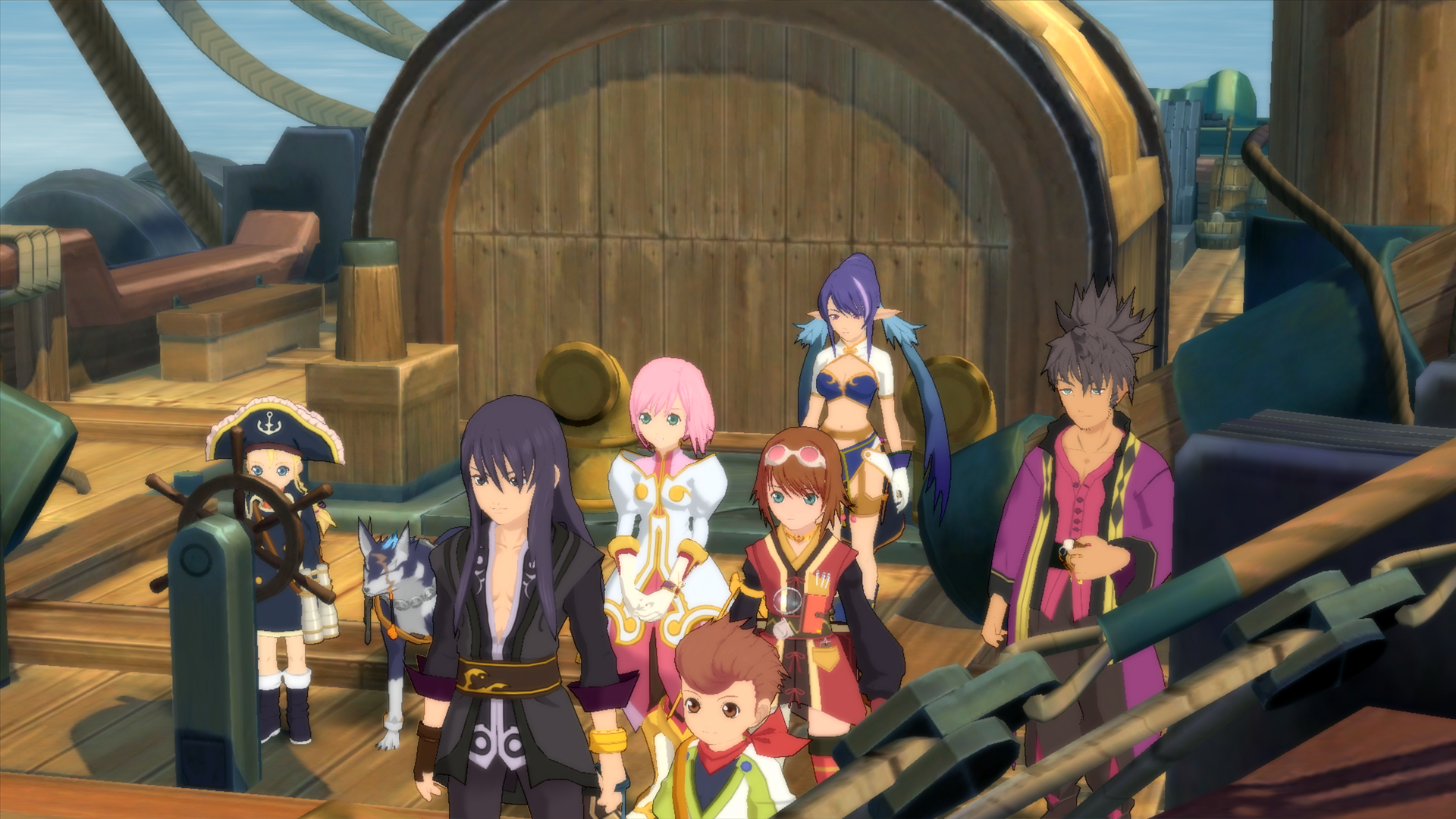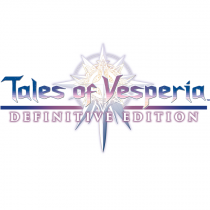
Tales of Vesperia: Definitive Edition Review
The Tales of series is a franchise of videogames spanning over 25 years, and personally my second favourite JRPG — Japanese Role Playing Game — series (hello Final Fantasy!). Originally released way back in 2008 for the Xbox 360, with an expanded PlayStation 3 port being released exclusively in Japan a year later, this updated version of Tales of Vesperia finally brought all the extra content to a global audience, alongside updated graphics and the choice of English or Japanese voice tracks. But is the game still worth playing all these years later? I’ve spent the past two months playing through Tales of Vesperia: Definitive Edition (henceforth known as Tales of Vesperia: DE) and what a journey it has been!

The gang's all here for a grand adventure!
We begin the story with main character Yuri, an ex-knight who, along with his faithful canine companion Repede, attempts to track down a thief that has stolen a “Blastia” (a piece of ancient technology that has a wide variety of uses), which in turn has cut off the water supply to the slums of Zaphias, a city with a shocking rich/poor divide. It isn’t long before he has a run in with Estelle, a young noble who is searching for Yuri’s estranged childhood friend, Flynn. The pair decide to travel together (along with good boy Repede) to find both Flynn and the thief, encountering several new party members along the way. It’s an endearing tale and as you travel the world of Terca Lumireis you’ll stumble across treacherous ruins, idyllic villages, and towns in fear of their oppressive rulers. Much of the population is heavily reliant on Blastia and its many uses, which becomes a key focal point later on in the story. It’s a shame then that for such a deep, well thought out narrative, the ending leaves you wanting more, providing little resolution after a disappointing final boss.
However, it doesn’t take long to realise Yuri is perhaps one of the most unique main characters seen in a JRPG. He isn’t the underdog hero avenging his family, or a powerful soldier taking on an evil megalomaniac. Yuri is a seemingly carefree guy, not too caught up in the troubles of the world, but who is also willing to get his hands dirty and suffer the consequences if it helps someone in need. He likes to throw in the odd dad joke now and again as well.
In fact, the majority of the party members recruited aren’t the usual tropes you might find in other games of this ilk, even the amnesiac Patty has more depth to her than I was expecting! A group of misfits, often at odds with each other, the nine main characters very rarely see eye-to-eye, creating a sort of dysfunctional family vibe to the adventure. For example, Estelle has lived her entire life behind castle walls, learning about the world through books. The rest of the team guide her across the world and it results in some fantastic character development, not only for her but for others such as Rita, the tough-as-nails mage who slowly warms to Estelle as they get acquainted.

One of many varied locations you'll see on your journey.
The story does have a tendency to drag on from time to time, with a lot of scenes not really furthering the plot, and several back-and-forth quests that seem to be there solely to pad out the length of an already very long narrative. A lot of it feels like filler episodes from an anime (Dragon Ball Z’s Garlic Jr. saga, anyone?) although they do add to the bonds formed between the cast, so it’s more forgivable in this case.
Speaking of the cast, the voice acting in Tales of Vesperia: DE is mostly great, which isn’t always the case when JRPGs are translated into different languages. Each voice actor delivers their lines in a believable way, not hamming it up because some big bad monster just jumped out at them. However, a big disappointment came from the new scenes not featured in the original Xbox 360 release. These new story moments are often fully voiced… just not by the original cast. Thankfully they’re not too dissimilar, so hearing Yuri & company speaking in different voices isn’t too jarring, but it is instantly noticeable when a new actor's lines are being spoken.
Staying on the topic of audio, Tales of Vesperia: DE’s music is simply sublime. Sweeping orchestral music accompanies your journey across the world map, whilst delving into some long-forgotten ruins will bring with it slower, sombre tunes. The battle music — particularly the boss fight tune — is also great, and more than once I found myself humming along whilst hacking away at some low-level enemies.
But how does the gameplay hold up all these years later? Whilst it’s obvious this is not a modern game, it still holds up incredibly well when compared to other, more recent JRPGs. You traverse the overworld, entering dungeons and towns via the old school world map system. Along the way you will encounter optional skits of the party conversing with one another, which flesh out their personalities and provide mostly light-hearted banter between the group. There is a lot to do in Tales of Vesperia: DE, from synthesising raw materials which enables you to upgrade weapons and armour, partaking in sidequests or optional areas to explore, or even trying your luck at a casino. If you find yourself wanting a break from the story, you’ll very rarely be short of things to do.
Four on one? Doesn't seem fair really.
The real show-stealer in Tales of Vesperia: DE is the battle system. There are no random encounters to be had here, instead you’ll spot an enemy roaming the overworld or area you’re in, and you then have the option to avoid them, or dive straight into a battle. Very rarely did I find myself skipping a fight; as with most Tales of games, the combat is frantic, tactical, and a joy to look at. Every character can learn a huge variety of abilities — known as artes — with more melee focused party members such as Judith and Karol mainly using strike artes, whilst characters like Rita stay away from the frontlines and blast enemies with magic artes. The majority of these artes are a visual treat full of colours, explosions, and fancy magic, exciting me each time someone learnt a new ability.
Each of the nine playable characters all feel different to control, with the basic gameplay mechanic being to keep a combo up on an enemy so that they don’t have a chance to attack you back, whilst making sure any other enemies are dealt with however you’d like by the competent AI. Don’t like how Raven is constantly using an arte that isn’t of any use? You can disable any ability mid-battle in the tactics menu, which also allows you to change positions, and how often party members do things such as use healing items, or target enemies that are attacking weaker members of the team.
Each weapon you equip also grants that character two or three skills, which can then be learnt and equipped from the main menu. These are mostly passive abilities, ranging from an increase in physical damage when particular weapon types are equipped, to automatically using a healing spell if a mage is low on health. Add in mid-air attacks, attacks that can down an opponent, and a slew of customisable tactics for each individual on the battlefield and Tales of Vesperia: DE will quickly have you chaining normal attacks into artes, before launching into Over Limit mode (activated once the player has taken/received enough damage to fill a metre) to unleash your most powerful attacks to slay even the most fearsome of bosses.
Despite sometimes showing its age and frequent pacing issues, Tales of Vesperia: DE is a phenomenal game that should not be overlooked by fans of the genre. Genuinely likeable characters that develop as the story progresses and a slick battle system with lots of variety really propel this into “must-play” status. If you find yourself with a spare 100 hours with nothing to do, here’s a game you shouldn’t pass up.
Tales Of Vesperia Definitive Edition (Reviewed on PlayStation 4)
Excellent. Look out for this one.
Tales of Vesperia: Definitive Edition is well worth your time, the story and in particular the characters are some of the most fleshed out and unique individuals that you can’t help but grow attached to. The flashy yet deep combat system enhances what is already a fantastic JRPG. Any fan of the genre needs to check this out.











COMMENTS